While writing my Setapp review, I realized some of the best Setapp apps had been on my Mac for years.
Setapp offers 250+ apps, but not all are created equal.
Others looked cool, but I never really used them.
I’ve tested over 40 – only 21 are my favorites.
Some I use daily. Others only when needed.
But every one of them earns its place.
Let’s dive in.
The Setapp Apps I Use Every Single Day (Core Stack)
Below are the Mac apps that I think I can’t live without.
Order does not represent ranking.
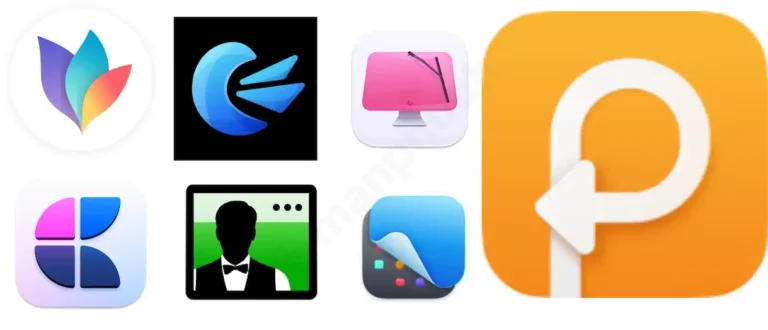
👉 Here is the comparison between the Setapp subscription and the App Store app separately, with a cost breakdown.

MindNode Classic
MindNode Classic is a mind-mapping app that helps me organize my thoughts visually.
It functions like a bird’s-eye view. Perfect when my ideals feel all over the place.

Why I like it:
It turns messy thoughts into clean outlines in minutes.
Super fast and super intuitive.
Real use:
I use it when learning from digital courses, planning blog content, or jotting down workflows, frameworks, and marketing funnel ideas.
It helps me revisit and see the big picture when I need.
If you’re the kind of person who likes to brainstorm visually, like me, this one’s a keeper.
Craft
Craft is a writing and documentation tool that helps me write long-form notes in sub-pages and organize them neatly into folders.
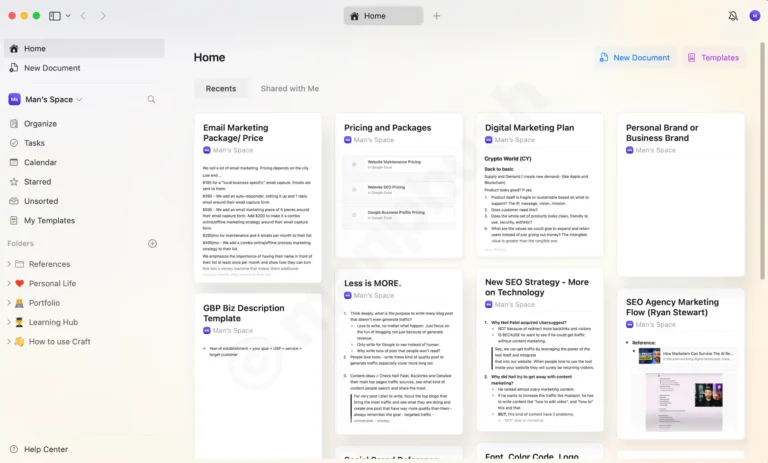
Why I like it:
The UI is clean and visually creative. Unlike Notion, which often feels too plain.
It makes my notes look beautiful, and I can access them all through Setapp without paying extra.
What I don’t like:
It sometimes loads slower than Notion, especially when switching between bigger pages.
Real Use:
I use Craft for writing down learnings from courses, planning business packages, drafting SOPs, SEO strategies, and client documents
It’s my digital notebook where I expand my ideas and make them become actual content I can use and refer back to.
CleanShot X
This is one of the best screenshot and screen recording tools I’ve used compared to the tool in the macOS system

Why I like it:
It’s super simple to use, and all the functions are in one place.
I especially love the scrolling capture and screen recording features.
They save me tons of time when I need to grab customizable long pages or quickly record a step-by-step video for clients or teammates.
Real Use:
I use it almost daily for visual communication, reporting, blog visuals, and sending walkthrough videos.
It’s fast, reliable, and one of those tools I never have to think about — it just works.

Paste
Paste is a clipboard manager that lets you revisit everything you’ve copied — text, links, images, even bits of code — and organize them into categories.

Why I like it:
It remembers everything I copy, so I never lose something important.
I can even check my clipboard history from months ago.
It’s fast, simple, and saves me from digging through old files or tabs.
What I don’t like:
It can feel a bit cluttered if I don’t clear things out now and then — but that’s more on me.
Real use:
I store text, links, HTML, and CSS code I use regularly.
It helps me speed up web design work for clients, drop code into WordPress, or paste quick blurbs into my content.
Paste makes writing and building way more efficient.
CleanMyMac X
CleanMyMac X is a Mac cleaner, optimizer, and health monitor that helps me keep things running smoothly, especially after weeks of downloads, installations, and junk piling up.
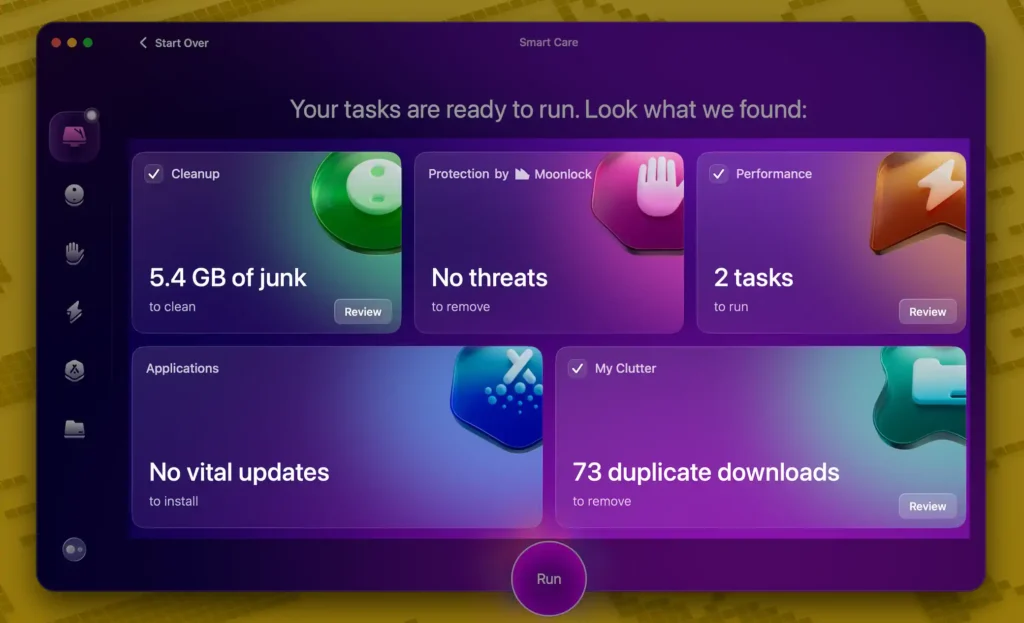
Why I like it:
Compared to older versions, CleanMyMac X has a cleaner interface that’s super friendly for non-techy users like me.
I can scan for malware, remove junk, clear caches, and even bulk uninstall apps with leftover files – all from one dashboard.
What I’ve noticed:
It’s not some miracle tool like people might expect, and I’ve seen Reddit threads call it overkill.
But honestly, I just want a tool that does the job without me poking around system folders — and this one delivers.
Real use:
I use it bi-weekly to clean my Mac.
I download tons of materials, take screenshots, and constantly work on content.
Those little caches add up. This app keeps my machine tidy and quick with just one click.
Bartender
Bartender is a menu bar manager that lets me hide or organize the icons sitting at the top right of my Mac screen.

It’s a small utility, but it makes a big difference if you value a clean, distraction-free experience, especially around the MacBook notch.
Why I like it:
I don’t want 20 random icons showing up in my menu bar — battery tools, cloud syncs, background apps I barely use.
Bartender hides everything I don’t need and only shows what I care about.
It makes my Mac feel minimal and focused.
Why Bartender over other tools:
Some apps offer basic icon hiding, but Bartender gives full control.
I can auto-hide, rearrange, and trigger icons only when needed.
It’s smooth, customizable, and lightweight.
Real use:
I set it to keep only my Cleanshot X, Wi-Fi, battery, and time visible.
Everything else stays hidden until I press a shortcut.
My Mac feels cleaner and less overwhelming.

Canary Mail
Canary Mail is a privacy-focused email client that combines a clean design with secure features like end-to-end encryption.

It supports Outlook, Gmail, iCloud, and IMAP accounts, and is perfect for anyone who wants all their important email account read in one place.
Why I like it:
The interface is clean and minimal, which helps me stay focused.
I also like that it doesn’t log me out, even if I clear all my browser cookies, unlike Gmail or Outlook.
It syncs reliably and keeps everything in one place.
Why I use it over others:
Compared to the native Mail app, the experience feels smoother.
I don’t need all the power features of Gmail and Outlook.
I just want something that works and doesn’t constantly pull me back into checking each email account separately.
What I don’t like:
It’s not a full replacement for Gmail web when I need labels or custom filters.
But as a focused checking updates and writing environment, it’s one of the best.
Real use:
I use Canary to focus on checking important emails from clients, subscriptions, and work, and will reply to them when necessary.
The Occasional Lifesavers (I Don’t Use Daily, but I’m Glad I Have Them)
These aren’t apps I open everyday, but it’s good to have when I need them. It’s like a toolbox in my garage.
Downie
Downie is my go-to app when I need to download videos quickly from YouTube, Vimeo, or other online video sources.

Why I like it:
Paste the link, choose the correct one, and it starts downloading. That’s it. It’s lightweight, fast, and doesn’t come with unnecessary complexity.
Real use:
I use it to archive helpful YouTube videos, download digital course tutorials for offline viewing, or pull down replays that I want to save.
Folx
Folx is a download manager that’s perfect for handling larger files, torrents, or downloads that require extra stability.

Before this, I was using utorrent and bittorrent, but neither of them met my expectations until I found Folx.
Why I like it:
It supports segmented downloads and resume capabilities, which means faster speeds and fewer interruptions.
Great for downloading private course files or bulk assets.
Real use:
I use Folx when I need to download full folders from cloud links or handle torrent-based files without hassle.
Permute
Permute is a drag-and-drop media converter for Mac for video, audio, and images. Fast and reliable, I can say.

Why I like it:
There’s zero learning curve. I just drop the file in, pick the format I need, and it spits out a clean result.
Real use:
I use it to convert .mov files to .mp4 or .heif photo from iPhone to JPEG or PNG before uploading to run ads or insert into an article post.

Elmedia Player
Elmedia Player plays media files that sometimes won’t open with QuickTime. It supports a ton of formats and lets me stream my downloaded video files.

Why I like it:
User-friendly interface, bulk video can be dragged into the playlist and played accordingly, and the most important one? Play almost any video format.
Real use:
I use it when I get video formats that won’t open from QuickTime. It’s a nice fallback to have installed.
TextSniper
TextSniper lets me instantly grab text from any image, PDF, or non-selectable screen area.

Why I like it:
I don’t have to retype text copywriting or copy-paste locked content. Especially for small text content, it is still able to snipe the text.
Real use:
When I need to snipe the text from a screenshot or copy text from a static graphic, this saves time every single time and increases my productivity workflow.

AirBuddy
AirBuddy shows all my Apple devices’ battery status in one clean panel — from AirPods to keyboards.

Why I like it:
It shows all my device battery levels instantly, and the remaining time of using the devices.
Real use:
I use it before hopping on client calls to make sure everything’s powered up.
The Creative & Visual Stack (Colors, Content, and Aesthetics)
This is the stack I lean on whenever I need to make my content visually stand out, which aligns with the brand color.
Whether it’s designing shareable screenshots, picking the perfect color code, or reusing the code blocks for website work.
Xnapper
Xnapper lets me take clean, beautiful screenshots with zero editing needed.
It’s especially useful for creating content I want to share on social media.

Why I like it:
I can manually adjust padding, rounded corners, and drop shadows, making everything look professional without me touching a design tool.
Moreover, Xnapper has many ready preset size settings for my screenshots.
I just need to pick the one that suits me at that moment.
Real use:
I use it for Twitter/X posts, product demo screenshots, and blog images that need to look sharp.
It saves me design time and still looks great.

Sip
Sip is a color picker tool that helps me capture any color from anywhere on my screen. Perfect for branding, design, and web styling.

Why I like it:
I can quickly grab, save, and organize brand palettes and match them across projects.
It feels built for creative people who want simplicity.
Real use:
I use it when building sales pages, branding mockups, or tweaking website designs.
One-click color picking to ensure brand palette matching for website and ads.
SnippetsLab
SnippetsLab is a snippet manager that keeps all my reusable text and code blocks in one place.

Why I like it:
It saves me from rewriting the same code over and over. You can organize everything by tags or folders.
Real use:
I store custom CSS blocks, tracking pixels, and anything related to code.
It’s my copy/paste code library, ready whenever I need it.
Good Utility Tools That I Recommend for Installation.
This group of tools might not be flashy, but it’s good to have when you need it.
Squash
Squash is a lightweight image compression tool that keeps visuals sharp while reducing file sizes.

Why I like it:
I can drop in multiple images and get them compressed in seconds — no complicated settings, just quick results.
Real use:
I use it before uploading screenshots to blog posts. Smaller file size means faster load times for the website.
Diarly
Diarly is a private journaling app that gives me a clean, distraction-free space to offload ideas, track thoughts, or just write freely.
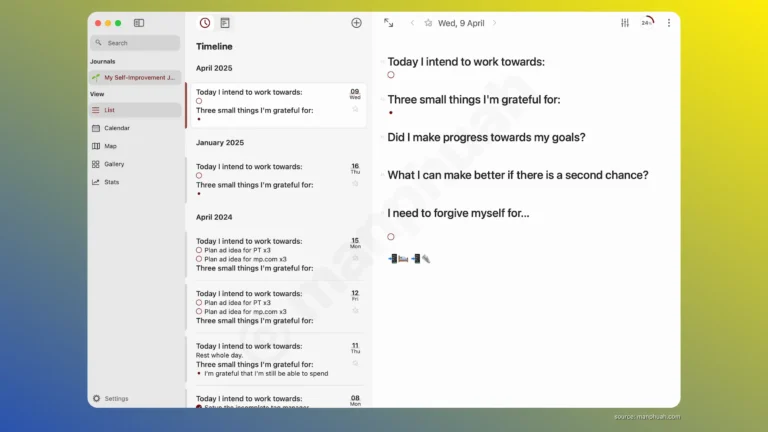
Why I like it:
It autosaves, syncs, and keeps things simple. No pressure to write daily, no clutter. Just a quiet place for thinking.
Real use:
I use Diarly sometimes just to write down some of my thoughts for life and things I’m grateful. It’s just a random journal book for me, that’s why I don’t use Journal App. Because I don’t always write a journal. Dialy is good enough.
iStat Menus
iStat Menus gives me real-time stats on my Mac’s CPU, memory, disk usage, and more — right in the menu bar.

Why I like it:
It’s a must-have when things feel slow or laggy. I can quickly see what’s hogging resources and take action.
Real use:
I use it when I’m multitasking with 15+ tabs, apps, and Final Cut all open. It helps me avoid crashes and better manage performance.
ClearVPN
ClearVPN is a one-click VPN app that helps me quickly switch virtual locations.
Useful for both privacy and SEO, marketing research, and analytics.
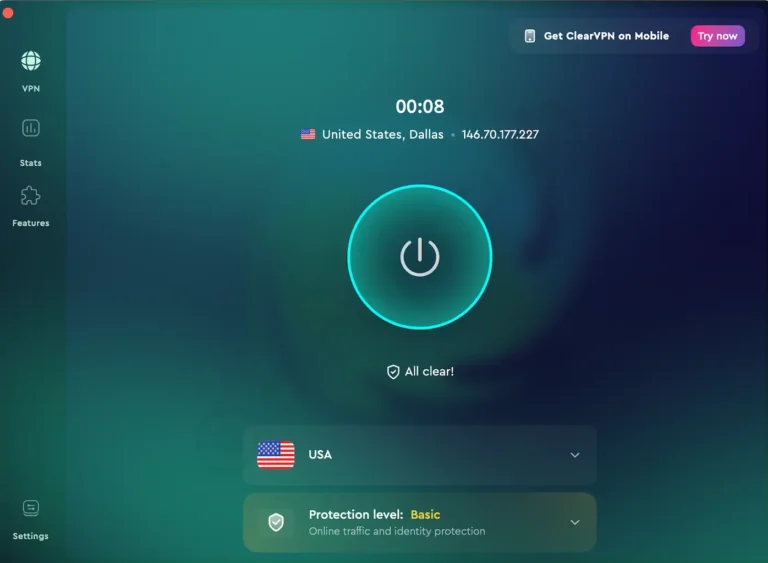
Why I like it:
It’s simple to use. No digging through menus or server lists. Just pick a use case like “Access region-specific content” and you’re set.
Real use:
I use it to do keyword, content, and SERP analysis on Google for different niches.
I don’t need the best VPN in the world. I just need one that gets the job done.
👉 Read my Setapp alternatives I researched before subscribing to make a better decision.
Final Thoughts: Is Setapp Worth It?
I’m not saying Setapp is perfect.
But if you’re using even 5–6 of these tools regularly, you’re already getting more value than what you’d spend buying them all individually.
For me, it’s replaced hundreds of dollars of paid tools — and more importantly, it keeps my workflow smooth without drowning in subscriptions.
To discover more, you can check out my full Setapp review here.
